As food bloggers, we’ve honestly got one of the coolest jobs in the world. Because how rewarding is it to create a delicious recipe from scratch and then see others recreate it and enjoy it?
That being said, I know writing recipes can be difficult. While you can have an amazing idea in your head, it’s tricky to get all those thoughts onto paper and communicate them in an effective way to your readers.
Luckily, there are a few easy ways that you can write better recipes as a food blogger. Let’s get into them!
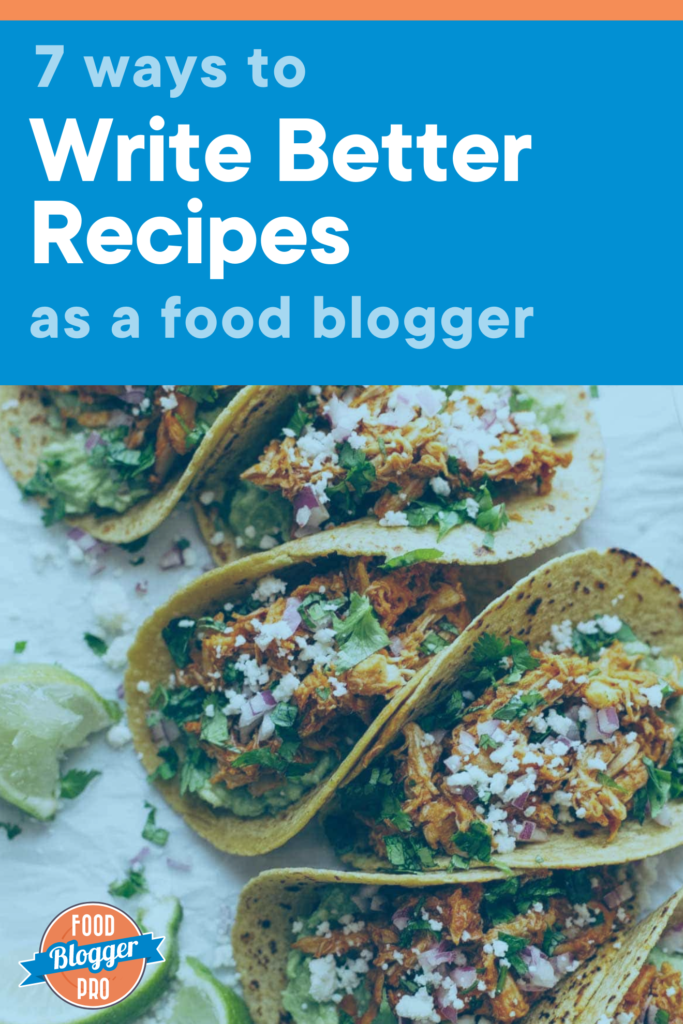
1. List ingredients in the order that they’re used in the recipe.
I don’t know about you, but when it comes to recipes, I like them to be as clear and straightforward as possible.
Therefore, to avoid confusion, it’s best to always list ingredients in the order that they’re used in the recipe. This helps make sure that those following the recipe don’t accidentally leave out ingredients.
Writing the ingredients in the correct order also helps the recipe flow more effectively. Like a book, you can easily read a recipe from top to bottom and understand what the end result will look like.
2. Write recipes in your own voice.
When you’re writing your recipes, don’t be afraid to let your voice shine.
The more you write recipes, the more comfortable you will get with your own voice and style. Do a bit of experimenting and decide how you like to make your recipes sound — are they informative and educational, or are they a bit more clever and humorous?
And if you’re not sure where to start when it comes to finding your voice, this article might help you out. When thinking about your voice, consider this: what do you want your readers to experience when they read your content?
All that being said, keep in mind that there can be too much of a good thing. If you’re too witty, your readers might have trouble following the steps and not completely understand what they need to do. Find your happy medium and stick with that!
Pinch of Yum is an awesome example of this — their recipes have a unique voice while still being informative and easy-to-follow. When you read through one of their recipes (like the Vegan Crunchwrap Supreme recipe shown below), you can immediately tell it’s a Pinch of Yum recipe. It’s witty, engaging, and unique, and all their recipes have a similar vibe.
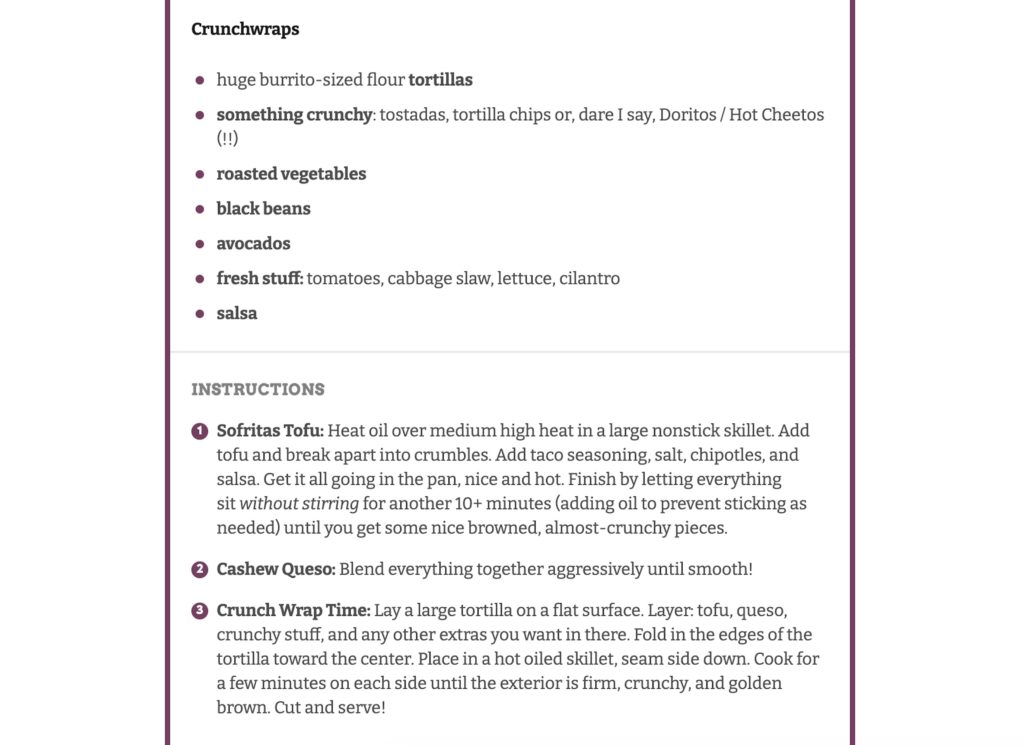
3. Use both weight and volume measurements.
If you live in the United States, chances are you write ingredients using volume measurements such as cups and tablespoons.
But did you know that most of the world prefers to write recipes using weight measurements like grams and ounces?
That’s why I recommend writing recipes with both weight and volume measurements! By including both, you can make your recipes more accessible to anyone from around the world.
Plus, there are a few perks to including both weight and volume measurements:
- You can create recipes that are accessible to everyone, regardless of their volume or weight measurement preference.
- Your recipes will be more accurate, which means your readers recreating the recipes will have more success.
- You will be able to scale recipes more easily. What’s easier to double: 3/4 cup or 100 g?
- If you choose to measure using the weight measurements, you will have fewer dishes to clean up in the end. Yes, please!
Interested in learning more? Check out this blog post to dive deeper into this topic and learn how to convert volume to weight measurements.
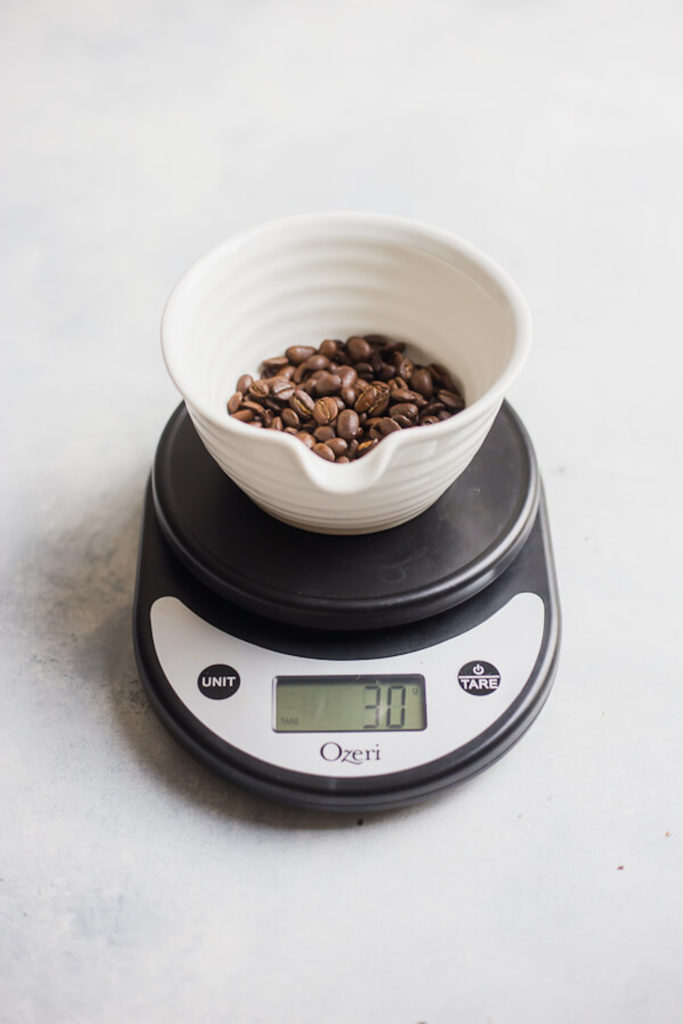
4. Get specific about doneness.
If you were making a recipe for roasted potatoes, which instruction would you prefer: ‘Cook until done’ or ‘Cook until browned and a fork can easily be inserted’? I know which one I would choose!
The best recipes are recipes that leave nothing to chance. They give the reader as much information as possible, including when and how to know when the food is ready.
And while you might know when certain types of food are done by just looking at them, your readers might not. Make sure to explain exactly what to look for (are you aiming for a certain color or temperature?) to make your recipes that much more helpful.
It’s also important to keep in mind that each person is going to have a unique setup in the kitchen. If a recipe needs to be cooked in the oven, a lot of ovens are different — some run hot, some run cooler, and some are fan-assisted. By breaking down exactly what to look for with doneness, you are ensuring that anyone can have success with your recipes, regardless of how high-tech their kitchen appliances are.
Want to level up your recipe game even more?5. Offer substitutions when possible.
While this won’t always be an option, it’s oftentimes helpful to offer substitutions for certain ingredients or equipment when possible. This helps accommodate all of your readers, regardless of their dietary restrictions or preferences.
Here are a few scenarios to consider:
- If your original recipe includes chicken, can you offer a vegetarian substitution using tofu?
- While you recommend cooking a particular recipe using an Instant Pot, can you add cooking times that might work for a slow cooker?
In my opinion, it’s best to add these substitution instructions into the notes section of your recipe card. That way they are explicitly stated, but they’re not going to get lost in the recipe instructions.
Here’s an example of how Pinch of Yum handles substitution options on one of their recipes:
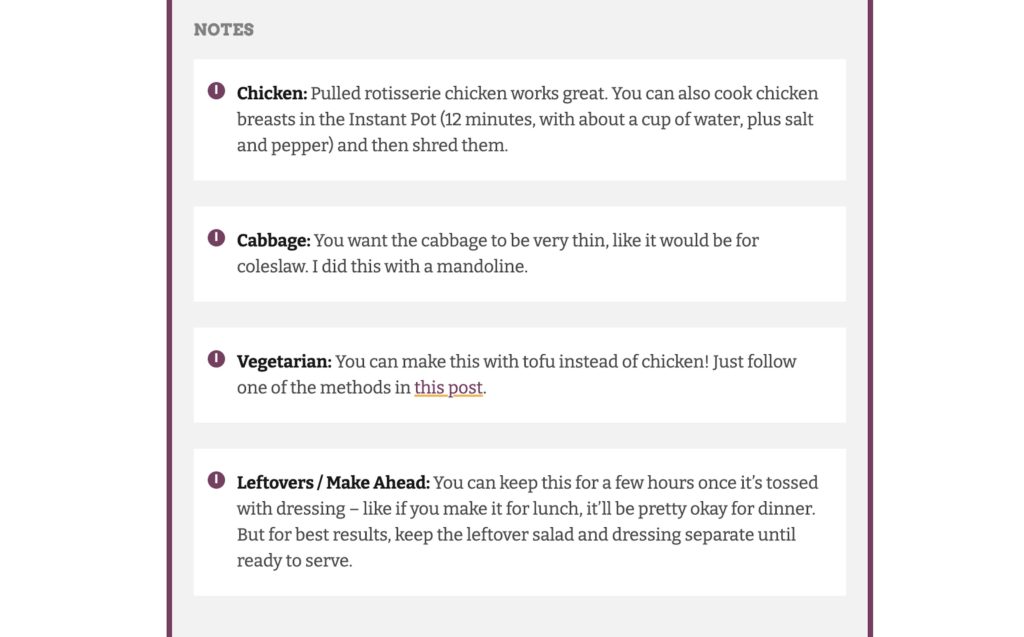
While you don’t necessarily have to list your substitutions in the exact same way, it might be something to consider adding into your recipes moving forward.
6. Include storage instructions.
When you’re making a recipe, chances are you’re not going to eat every last bite in one sitting — that’s why I get so excited when recipes include storage instructions.
Whether you’re eating a vegetarian lasagna or a lemon chiffon cake, each type of food will have unique guidelines when it comes to storage. By spelling that out in your recipes, you can help eliminate food waste and let your readers enjoy the food for that much longer.
Here are some important questions to answer when providing storage instructions for a recipe:
- How should the food be stored — in the fridge or at air temperature?
- How long will the food stay fresh?
- Can the food possibly be stored in the freezer for a few months?
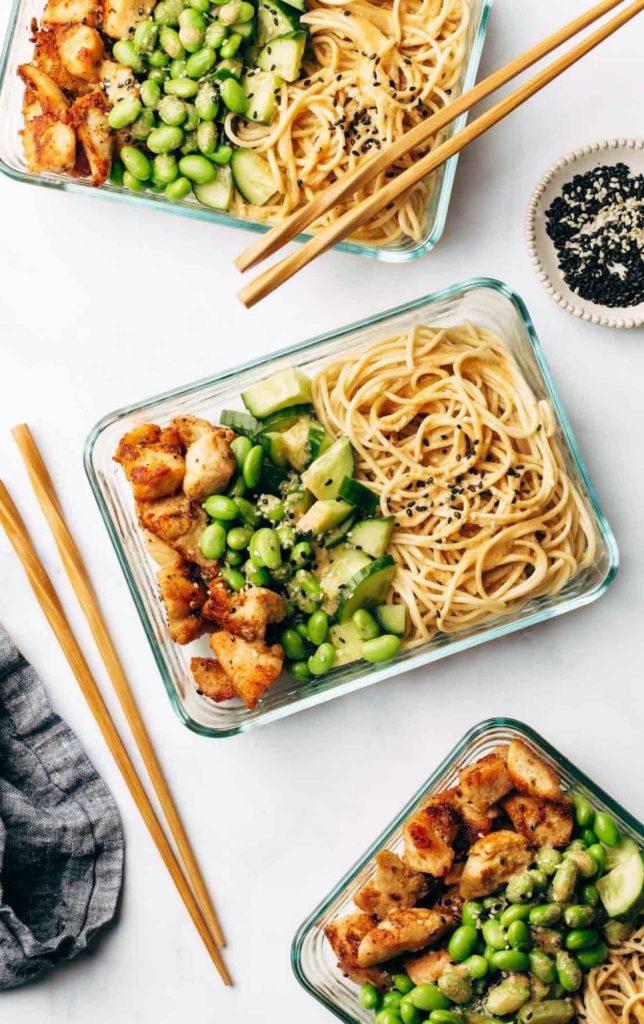
7. Give credit where credit’s due.
While sometimes you’ll come up with a 100% original recipe and write it entirely from scratch, other times you’ll take existing recipes and modify them to create something new. And that’s okay!
It’s just always important to give credit where credit’s due and give proper attribution to the original source.
As a general rule of thumb, here’s what you should do when adapting recipes from other sources:
- In the recipe itself, explicitly state where it’s adapted or modified from.
- Include a link to the original recipe or cookbook.
And when I say adapting a recipe, I don’t mean copying and pasting the ingredients and instructions! Make tweaks and adjustments to the recipe to create something new, and always write recipes in your own words.
—
Like anything else, recipe writing is a skill that you grow and improve over time. I hope you’ll take these tips and keep making engaging, informative recipes that your readers will recreate and love.
So all you need to do is just keep thinking of new ideas, challenging yourself in the kitchen, and sharing your love of food with the world with your recipes. You’ve got this!
Now we’re curious: What are some tips you’ve personally learned over the years to write better recipes? What are some of your struggles when writing recipes? Let us know in the comments!